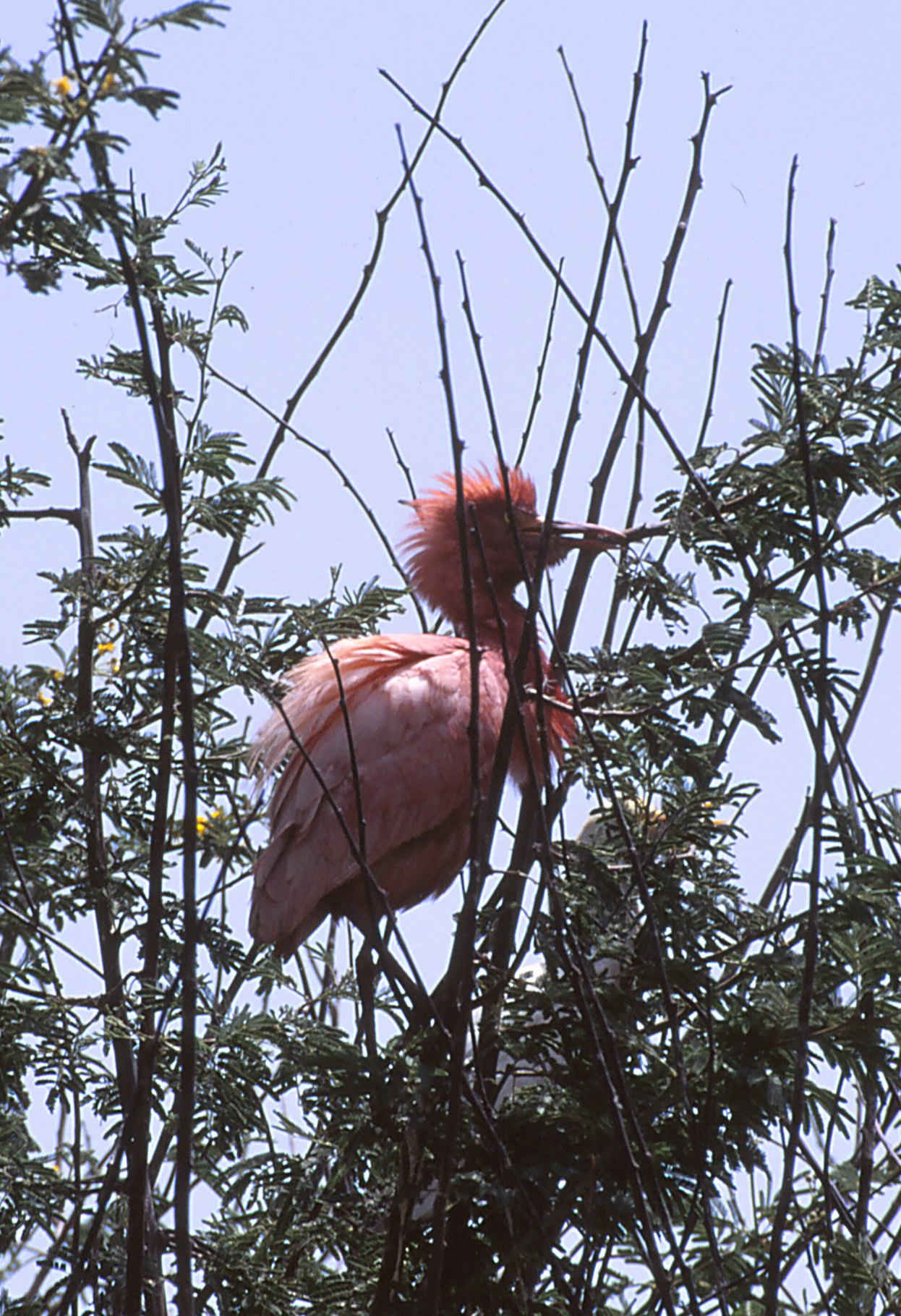
After my post a few days ago about the unusual Cattle Egret in Florida, I heard from two people with interesting observations to add. Robert Edgar and Sarah McKenzie sent the photos featured here and said “We photographed a very similar bird on 1 May 1995 at a breeding colony in the Nile Valley, Egypt.It is even more rusty buff than the Florida example, perhaps even darker on the face and breast. With wings raised the flanks look slightly paler as were the upperwing coverts. It is very much darker overall than your left-hand ‘aberrant’ on p.64 of your book. I wondered at the time if it was coromandus but it was too dark”.
I agree. It looks darker than the Florida bird, although some of that could be the effects of lighting. The overall buff color, slightly blotchy on the upperwing coverts, is very similar to the Florida bird, and is wrong for Asian coromandus.
I also heard from Angie who reports seeing similar birds four times in the last eight years around Marion and Lake counties, Florida. She reports a pale buff bird present this spring at Emeralda Marsh in Lake County, FL. That observation, and the darker color of the Egypt bird, suggests that there may be a range of color variation from normal to dark. All of this is consistent with abnormal pigments produced by the birds, and less so with staining from an external source.
Another question comes to mind: since males apparently have more buff color than females, it’s possible that all of these extremely dark birds are males. That could be determined by watching behavior at the nest, and would be interesting to know.
I would be very interested to hear of other sightings, and especially other photos, of buff-colored Cattle Egrets.
[portfolio_slideshow]


In the eastern wings of the Sinharaja wild reserve in Sri Lanka (world heritage) I have spotted a Cattle Egret(Bubulcus ibis) bright yello in color. Has to be a sub species.